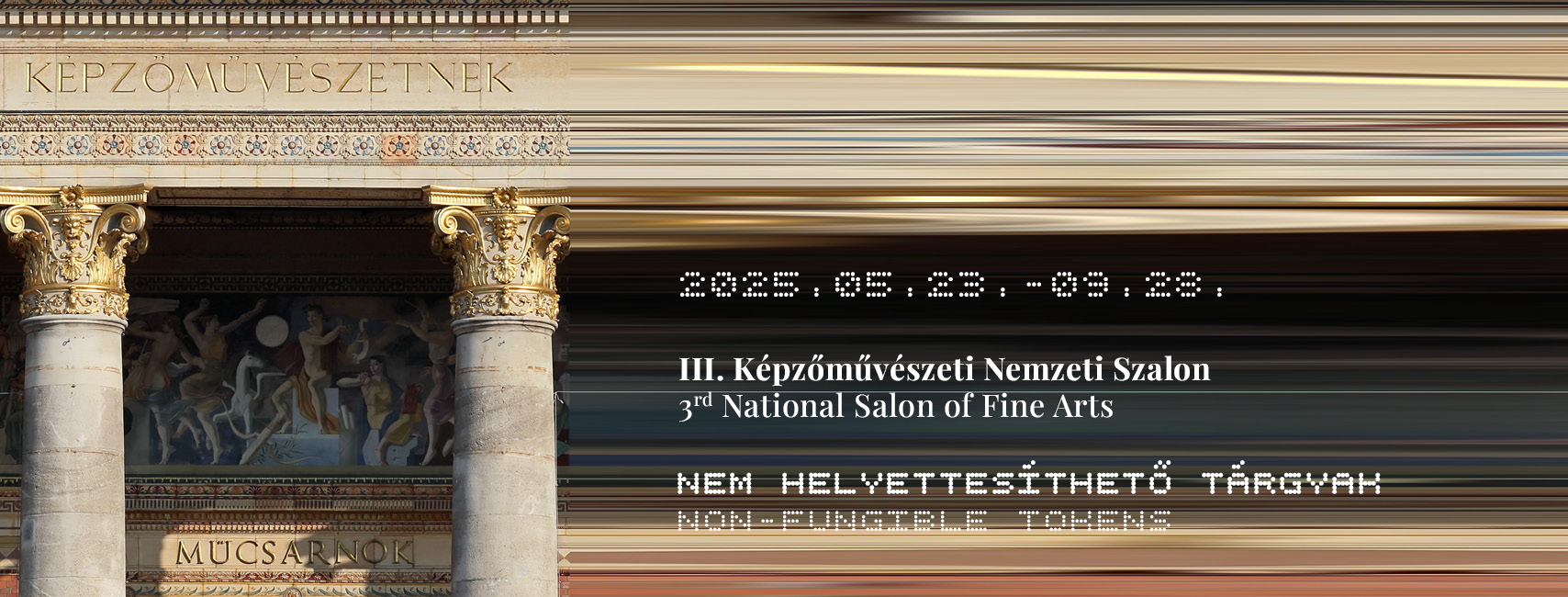
Projekt tervezési terület (en)
NewPalace
Our faculty member, Dr. Zoltán Bánföldi DLA, associate professor, painter, will again exhibit at the Kunsthalle Budapest. At the invitation of the chief curator of the National Salon of Fine Arts, “Non-fungible tokens”, he will be included in this highly prestigious exhibition, organised by the Hungarian Academy of Arts (HAA). The exhibition was opened by Attila Turi, Kossuth and Ybl Prize-winning architect, President of the HAA, and József Szurcsik, Merited and Munkácsy Prize-winning artist, full member of the HAA.
The exhibition is the third in a series of annual National Salon of Fine Arts, presenting the most important endeavours and works of Hungarian art in Hungary and beyond its borders over the past five years.
The title of the exhibition is a term borrowed from the crypto world, meaning a virtual object with a unique digital ID, but the term in its modernly ingenious way captures something of the essence of fine art.
Our virtual reality, which invaded our existing spaces with overwhelming intensity at the turn of the 21st century, now seeks to permeate our lives more carefully, with the utmost circumspection. Step by step. As the escalating digital revolution bombarded our daily lives with an increasingly unmanageable torrent of information, introducing newer and newer functions, it has, by now, rendered itself ultimately indispensable. It has created a digital culture that generates its own values, previously unknown, through infinite and irreconcilable contradictions.
So much so that human culture has awakened in a universe never seen before.
Is it an exaggeration to claim that this material world thrust into virtuality – with the ingenuity of the human mind in the background, of course – functions as living matter in its own intangible totality? A glowing, sizzling, undulating consciousness that, in its own defence, responds to the tradition-based questions posed by human culture with elemental force. Matter? A reality beyond matter? Tradition? The medieval theologian Duns Scotus’ concept applied to virtuality? The traditional forms of art? Artistic freedom created through digital means? Self-identity? Virtual identity? And once we got this far: the unrestricted replicability of digital artworks versus the uniqueness of tangible artistic objects?
Non-fungible token.
An irreplaceable object.
The ‘digitalised’ meaning of the term, which has become widespread over the past five years, is an invention of the new millennium. It was created by the cryptoworld, founded by Satoshi Nakamoto, who remains completely unknown, and what it denotes is essentially a form of virtual content, assigned a digital identifier, and as such, unique and unrepeatable.
Yet, if we look back at the term ‘non-fungible object’ from the digital present, not just in its current context but in its traditional sense, it becomes bizarrely relevant to the entire realm of visual art. The contemporary ingenuity of its virtual metamorphosis captures something of the essence of art both before and after digitisation.
A striking change in contemporary art over the past five years is that even works created using traditional methods can no longer remain unaffected by the digital cosmos, which is racing at wind speed. This year’s National Salon of Fine Arts seeks to reflect the richness of personal responses to society’s shifts and, in doing so, to illustrate the infiltration of the emerging virtual world into traditional artistic thinking. Whether this manifests in form and/or content remains the artist’s individual decision. The exhibition seeks to reveal a worldview reflecting upon our times, where the desire to rethink tradition coexists with the so-called digital mindset underpinning the tangible creations of the material world.
To reveal all that has become inseparable from our existence as attested to by the present artworks.
The exhibition is curated by József Baksai, co-curated by György Verebes.
Art consultant: Katalin Kállai
(mucsarnok.hu)
The exhibition can be visited until 28 September 2025.